
The creative work of the leading baroque master in Northern Italy, Domenico Fetti, had a significant impact on the development of genre tendencies in the Italian art of the 17th century. He was born and studied in Rome, where he began his artistic career. At the age of 24, Fetti moved to Mantua and entered the service of Duke Ferdinando II Gonzaga. His formation as an artist was influenced by the work of Caravaggio and his followers, as well as Els-Heimer and acquaintance with the early works of Rubens and the Venetian masters that were kept in Mantua. Leaving the service of the Duke, Fetti moved to Venice, where he spent the last few years.
He wrote small paintings on biblical themes, which were distinguished by the simplicity and clarity of compositional decisions. Scenes of the Old and New Testaments unfolded on a beautiful idyllic or heroic landscape background, interpreted with life’s authenticity. Fetti’s characters were distinguished by their ordinary appearance, but at the same time, due to their free picturesque manner, choice of color decisions, games of light, they acquired an elevated character. The artist was one of the first to create a poetic life-like image of biblical heroes. Other famous works: “Melancholy”. Louvre, Paris; “Healing Tobit.” The Hermitage, St. Petersburg; “The Parable of the Lost Drachma.” Palazzo Pitti, Florence.
 Melancholy by Domenico Fetti
Melancholy by Domenico Fetti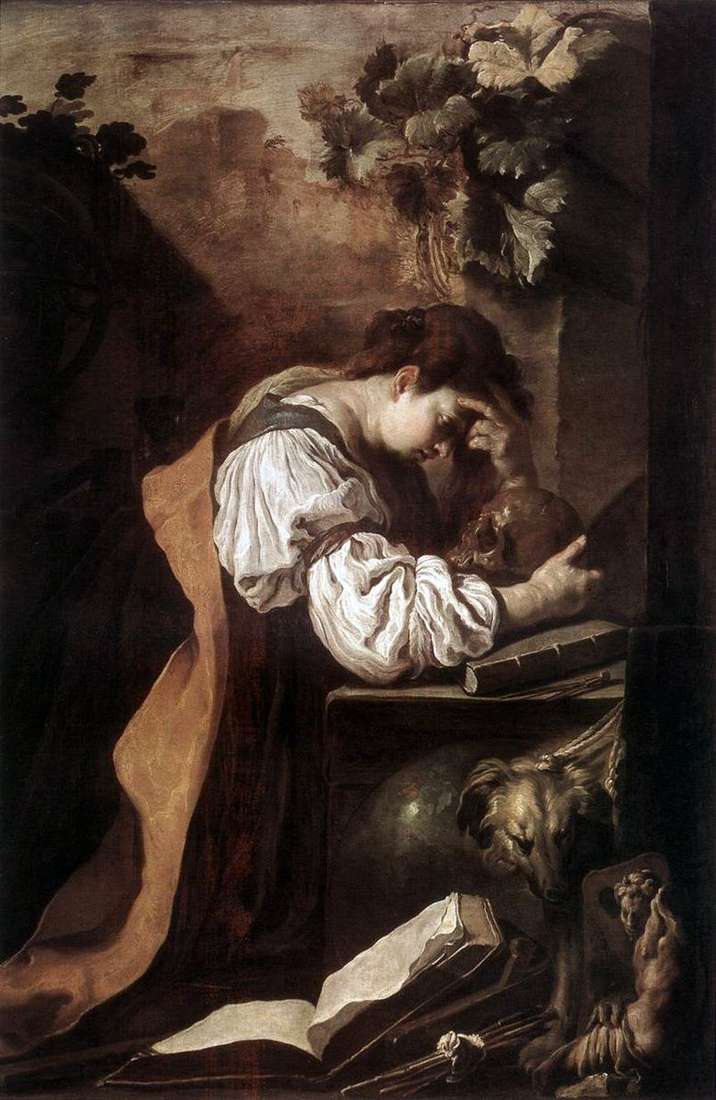 Melancholia – Domenico Fetti
Melancholia – Domenico Fetti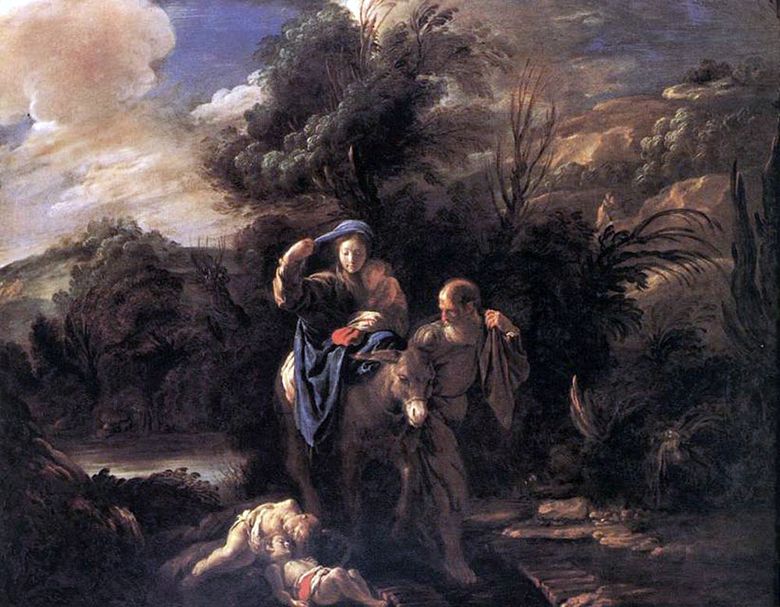 Vol vers l’Égypte – Domenico Fetti
Vol vers l’Égypte – Domenico Fetti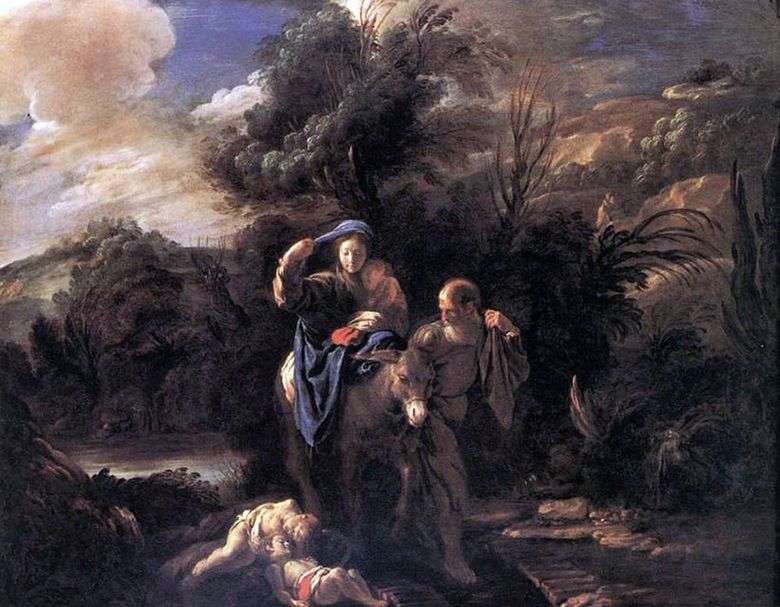 Vuelo a Egipto – Domenico Fetti
Vuelo a Egipto – Domenico Fetti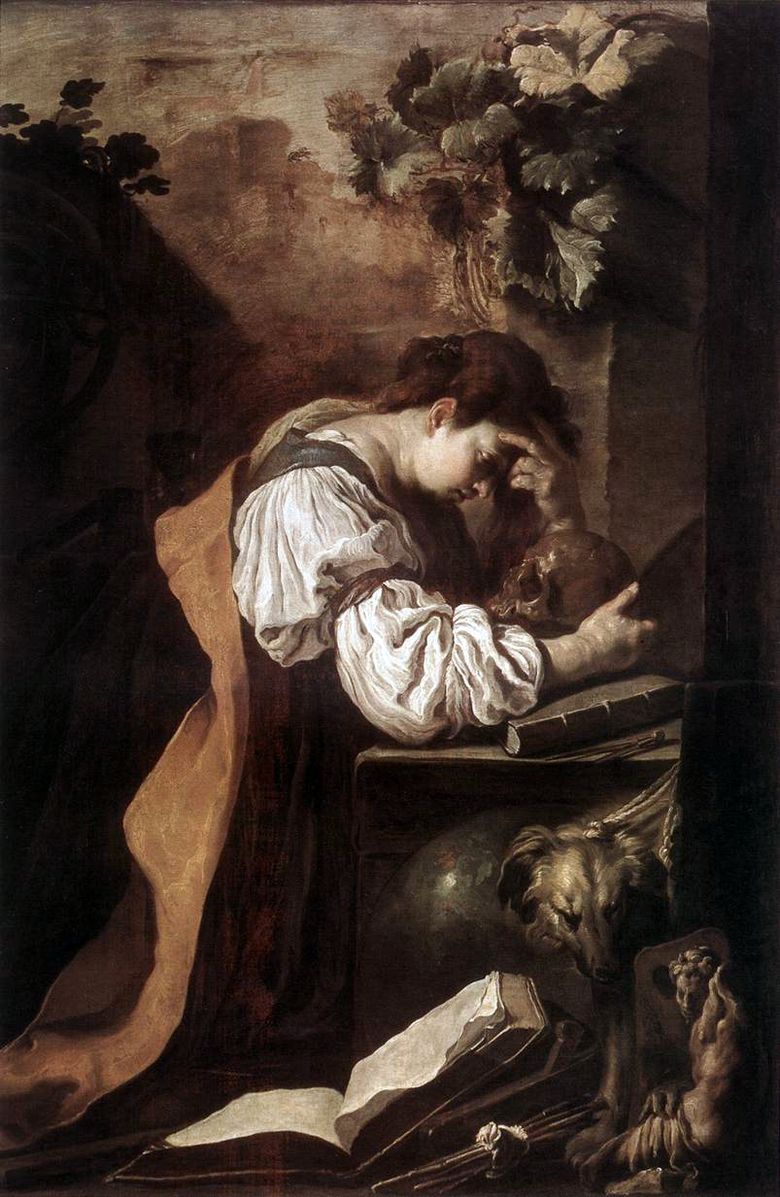 Mélancolie – Domenico Fetti
Mélancolie – Domenico Fetti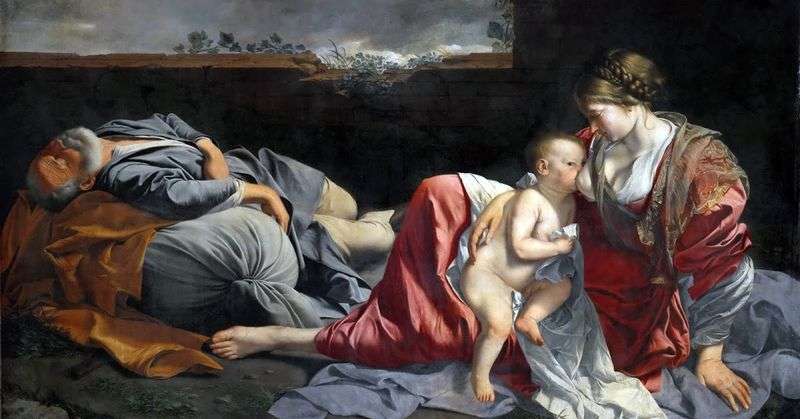 Rest on the way to Egypt by Orazio Gentileski
Rest on the way to Egypt by Orazio Gentileski The Adoration of the Shepherds by Domenico Ghirlandaio
The Adoration of the Shepherds by Domenico Ghirlandaio Escape to Egypt by Annibale Carracci
Escape to Egypt by Annibale Carracci